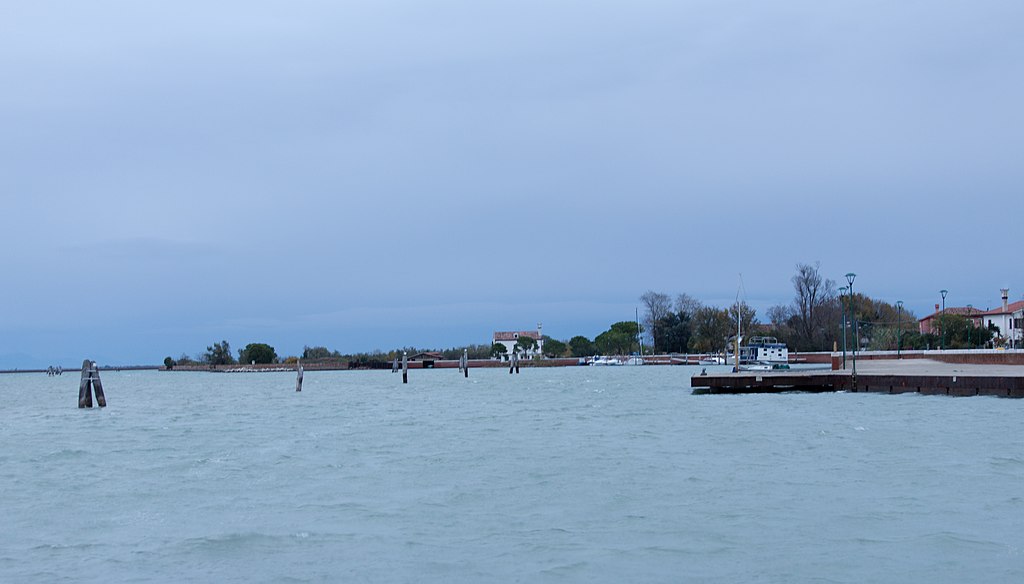Discovering the gardens of the Lagoon
This is one of the Venice itineraries for those with extra time during their stay in Venice. It is an unusual route for tourists and is mainly for those who want to escape the hustle of Venice. We'll explore the nearby Venice islands and the locations genuinely off the beaten path.
Lagoon Discovery
On this full-day tour, you'll embark on the Lagoon discovery and uncover the hidden gems on the Venice map. The islands on this Venice itinerary include Sant'Erasmo, Lazzaretto Nuovo, Le Vignole, and Sant'Andrea.
Only a few inhabitants are on these islands, mainly dedicated to agriculture. Spending time in these remote places will allow you to admire a different side of the Adriatic universe. You will stroll through the nature of the Venetian Lagoon, see market gardeners, and buy their produce.
History of the Lagoon through the nearby Venetian islands
During this Venice itinerary, you can explore four islands that played a particular role in the history of Venice. Some of them, like Sant'Erasmo, are more lively and traveller-friendly. Some are more remote and less touristy. Yet, they all hold the memories of both ancient and relatively recent times. Let's dive in!
Using a vaporetto
Start from Fondamente Nove and take vaporetto #13. During this tour, you will use vaporetto a few times, so to save your money, we suggest buying one of the Venice city passes. These passes offer great deals on public transport and access to most Venice museums and churches. After about 45 minutes, you will reach Sant'Erasmo, the tour's first stop.
Sant'Erasmo
Sant'Erasmo is the second-largest island in the Venetian Lagoon, with Venice being the first. Known as the vegetable garden of Venice, it has maintained its propensity for the agricultural economy over the centuries. It has been the vegetable garden of Venice since 1500 due to the demand for domestic products such as violet artichoke.
Sant'Erasmo is a peaceful and pleasant place with fewer than a thousand residents. Many Venetians also come here for the various festivals held on the island. The artichoke festival at the Torre Massimiliana and the Festa del Mosto are a few events to name.
Explore Sant'Erasmo on bike
If you prefer to use a bike instead of walking, you can rent one on the island. If you get off at Capannone vaporetto stop, take Via de le Motte and turn at Vicinale dei Forti.
Walk straight until you reach the island's B&B, Il Lato Azzurro. You can rent a bike there for around 5 EUR for the first two hours and 1 EUR for each additional hour (prices are subject to change).
Once you reach the Sant'Erasmo Chiesa stop, visit the various shops near the landing stage. These are small kiosks where you can buy zero-kilometre products like vegetables and honey.
Head west until you reach the Massimiliana Tower, a Habsburg fortification from the 1800s. The Torre Massimiliana underwent a few restorations and opened publicly in 2004.
Lunch
At this point during the tour, let's have a lunch break. If you want to align with nature to the fullest, a picnic area is close to the Tower. However, we recommend having a proper meal at Al Bacan. This lovely little restaurant offers excellent food and waterfront seating. Besides, you can easily find it on our Venice map.
After returning your bike, head back to Capannone stop and take a vaporetto #13. After a few minutes, get off at Lazzaretto Nuovo. Please, remember that this is an on-request stop.
Lazzaretto Nuovo
Accessing Lazzaretto Nuovo is a bit more challenging than the other Venice islands on the tour. Travellers can only visit from March to November on a guided tour held every Saturday. Please, keep this in mind while planning your visit. To participate in the tour, you must make an email request through the island's official website.
The fee for the tour: 10 EUR per adult, 5 EUR per child (prices are subject to change). You can pay with a credit/debit card once you arrive.
The name Lazzaretto Nuovo originated during the times of the plague. The island was an inspection place for people and goods that could be infected with the plague. If the infected were found, they were transferred to Lazzaretto Vecchio, another island in the Venetian Lagoon.
On the island, also known as the ecomuseum, you'll walk along the nature trails and visit an archaeological route with excavations. You will also attend a museum exhibit at the Tezon Grande. The whole tour lasts around two hours.
After the tour, take water bus #13 again and get off at the island of Le Vignole.
Le Vignole
Le Vignole received its name after the vineyards that used to occupy the island. It is one of the small islands found during the Lagoon discovery. The local population is busy cultivating produce for the demand of Venice.
It is a pleasant place to be outdoors and take a relaxing walk. The island was once a Venetian holiday resort and then a military area. You can still find military barracks closed to the public due to their role in the history of the Lagoon.
Don't miss the Church of Santa Maria Assunta and Sant'Eurosia, which replaced the original church from the 7th century. The current church is a typical 16th-century Venice church. It is open exclusively on special occasions, usually closed otherwise.
Sant'Andrea
The last stop on the Lagoon Discovery tour is the island of Sant'Andrea. Connected with Le Vignole by a bridge, its most famous attraction is the Fort. The famous Giacomo Casanova spent some of his prison days here in 1743. Currently, the Fort is not accessible, but it is worth seeing from the outside.
As you can see, it is an alternative Venice itinerary. You can enjoy the Veneto region's rural area and discover the Venetian Lagoon's rustic reality.
